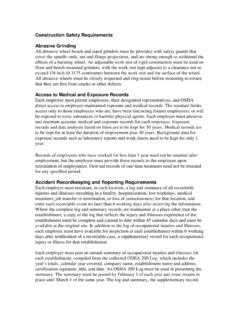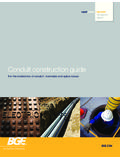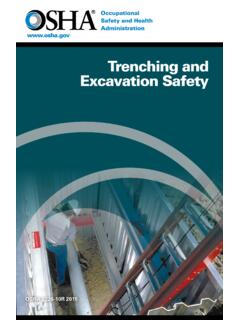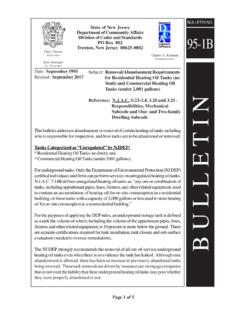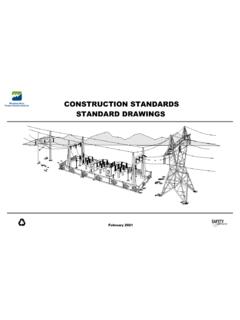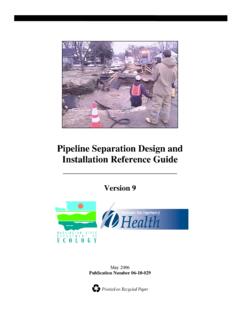Transcription of Communication Facilities Construction Design Standards
1 DukeOIT Office of Information Technology ~ e B1cs1 RCDD _____ Communication Facilities Construction Design Standards February 2016 Rev. 8/2/16 2 Contents 1 Introduction ..3 Planning and Design ..3 Responsibilities ..3 2 Building Communications Service Entrance ..4 Routing of underground Building feed cables ..4 3 Main Distribution Frame Room (MDF)..4 Size ..5 Electrical Structure requirements ..7 4 Intermediate Distribution Frame Room (IDF) ..8 Size.
2 8 Other 5 Intra-building Distribution System ..8 Horizontal cabling system ..9 Vertical 11 6 Horizontal and Vertical Cabling - Voice, Data, and CATV ..11 Horizontal 11 Vertical cabling .. 12 7 Wireless Infrastructure 8 Cellular Infrastructure Design ..12 9 Collaborative Teaching and Learning 10 Parking 11 Help Telephones ..13 12 Elevator 13 Help Call Box System ..13 14 Digram of Typical MDF and IDF Room 15 Diagram of Typical Rack Power 16 Diagram of Typical Rack Power Receptacle ..16 Rev. 8/2/16 2 1 Introduction Duke University has a multitude of voice, data, audio visual and security requirements that rely on a wiring infrastructure that is of quality Design , reliable, and flexible, to meet the ever changing demands of its educators, medical staff, and researchers.
3 This document is designed to inform planners, architects, engineers, and contractors of the minimum infrastructure requirements of Duke University. These requirements must be met for all on-campus Duke University Facilities . Planning and Design During the planning and implementation stages of any new facility or renovation, engineers and architects will come into contact with one or several representatives from Duke's communications service provider, Office of Information Technology (OIT). OIT is interested in providing a high quality, consistent infrastructure, and bring expertise to the complex world of communications at Duke. Renovation projects are quite different in nature from new Construction and require very early consultation with an OIT representative.
4 This early consultation will ensure all existing and future communications distribution system requirements are addressed. For ease of coordination, please contact an OIT analyst below. In turn, they will coordinate a team of communications engineers, technicians, and support personnel to meet the scope of the project. It is extremely important that a representative from OIT be contacted during the early planning stages to ensure all aspects of communications requirements are met. The diversified communications options vary from building to building and require a great deal of planning. The team will work with the occupants, contractors, and project managers during the planning stages, and provide them with the space requirements for communications room(s), distribution Design assistance/approval, and cost estimates.
5 For all University buildings, contact either of the following: Chet Sikes, RCDD Communications Infrastructure Design and Engineering, OIT 334 Blackwell St., Suite 2111 Box 104111 Durham, NC 27708-4111 (919) 684-2045 Dickson Clifford Field Operations Manager, OIT 334 Blackwell St., Suite 2111 Box 104111 Durham, NC 27708-4111 (919) 613-6697 Responsibilities OIT is responsible for supplying all voice, data and video backbone and horizontal cable. OIT will hire a telecommunication contractor to pull, terminate, label and test all cable. OIT will provide voice and data equipment and materials to up fit the telecommunications rooms. The electrical contractor is responsible for the purchase and installation of the approved raceway system. Rev. 8/2/16 3 2 Building Communications Service Entrance Every new University building must be tied into the existing underground conduit duct system for voice, data.
6 And video communications. Routing of underground conduit All inter-building communications cabling on the Duke campus is installed in underground ducts encased in concrete. This duct system follows a master plan developed several years ago with the University Architect, and is placed in designated utility corridors. OIT is responsible for the Design , installation, and budget of the underground duct system up to the manhole outside of a new building. During the Design process, OIT will specify the route and building entrance location. Number of conduits required OIT will assist in developing the best size and number of conduits, to anticipate ultimate requirements for service and emergency needs. Construction drawings shall provide a minimum of four 4" conduits extending from a manhole (typically located 5' 0" outside the building) and terminating in the building's Telecommunications Entrance Room as described later in this document.
7 Conduit Where the entrance conduits penetrate the foundation, footings, or outside walls of a building, rigid metallic conduit shall be used. Plaster fiber ducts or aluminum conduit are not acceptable. These conduits shall have a minimum of 2' 0" ground cover at the point of exit. A downward slope must be maintained to the manhole to prevent water from draining into the building. Sealing conduits Seal all conduits inside the building to prevent rodents, water, or gases from entering the building. Bends Bends in conduit runs must not exceed 180 between manholes or other access points. The total number of bends in a conduit section run must not exceed two 90 bends or equivalent of sweeps and radius bends. All bends must be long, sweeping bends, with a radius not less than ten times the conduit's diameter.
8 For example, a 4" conduit would have a minimum sweep of 40". Pull strings Equip every conduit with a nylon line that has a minimum test rating of 200 pounds. Building feed cables Each building must have inter-building copper, and fiber to provide voice, data, and video services. Contact OIT for a cost estimate of the cable. OIT will also serve as contractor for the cable installation. 3 Main Distribution Frame (MDF) Room The Main Distribution Frame (MDF) room serves as the demarcation point location for the building. It is the transitional point from the voice, data, and video building feed cables to intra-building backbone cable, which runs to each Intermediate Distribution Frame (IDF) room. The MDF contains electronic equipment and can double as the IDF room for the area of the building around it.
9 Connecting conduit or raceway systems are required to ensure that the greatest distance from any Rev. 8/2/16 4 telecommunications outlet to the nearest IDF does not exceed 295 linear feet or 90 linear meters. See page 14 diagram T101 for more details on a Typical MDF Design .
10 OIT will Design and budget for the cable support system in each MDF and IDF according to minimum Standards . These specifications will be included in the bid documents to the telecommunications contractor. Location General The MDF room for each building is typically in the basement and must be located on a bearing wall, which reduces the possibility of relocating the room if the building is expanded or altered. Do not locate the MDF room in any place that may be subject to water infiltration due to flooding, steam infiltration, humidity from nearby water or steam, heat, or any other corrosive atmospheric or environmental conditions. Do not allow utilities except those serving the room to run above or in this room (for example, HVAC ducts, electrical service planes, plumbing lines [water, soil, or steam]).

